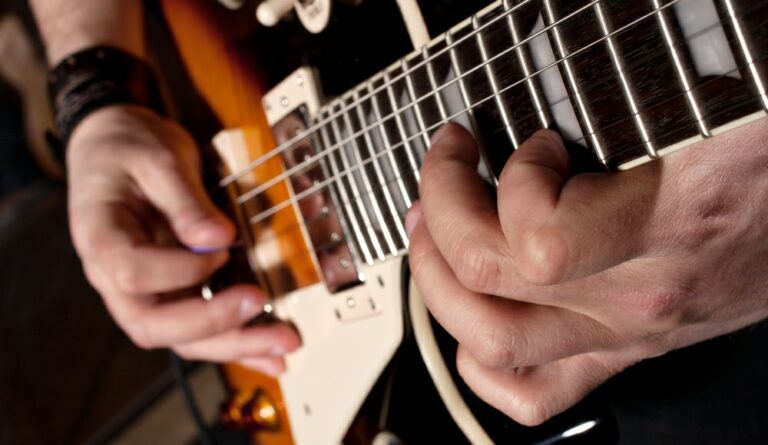The Complete Guitar Setup Guide: Why You Need One, What It Does, and How It Improves Playability & Sound
This complete guitar setup guide is what you need whenever you get a new guitar, change location and temperatures or humidity or just buying a new guitar. Whether you’re a seasoned player or a beginner, one of the most important steps in ensuring your guitar is performing at its best is having a guitar setup.
A setup is not just a routine maintenance task it can completely transform how your instrument feels, sounds, and plays. But what exactly is involved in a guitar setup, and why is it essential for every guitar, including new ones, even expensive models?

In this detailed guide, we’ll explore what a guitar setup entails, why it’s so important (even for new guitars), and how it can enhance everything from intonation to pickup height, neck relief, and more. We’ll also dive into whether setups are specific to musical styles or personal preferences and explain key setup parameters like bridge height, pickup pole adjustment, and nut setup. Let’s unlock the full potential of your guitar!
What is a Guitar Setup and What Does It Do?
A guitar setup refers to a series of adjustments and fine-tuning processes designed to optimize the playability, sound, and comfort of your instrument. A well-done setup ensures that your guitar is perfectly tailored to your playing style, whether you prefer smooth, low action or a higher action for a more dynamic response. It involves adjusting key components of the guitar to ensure everything is in the right position, calibrated for optimal performance.
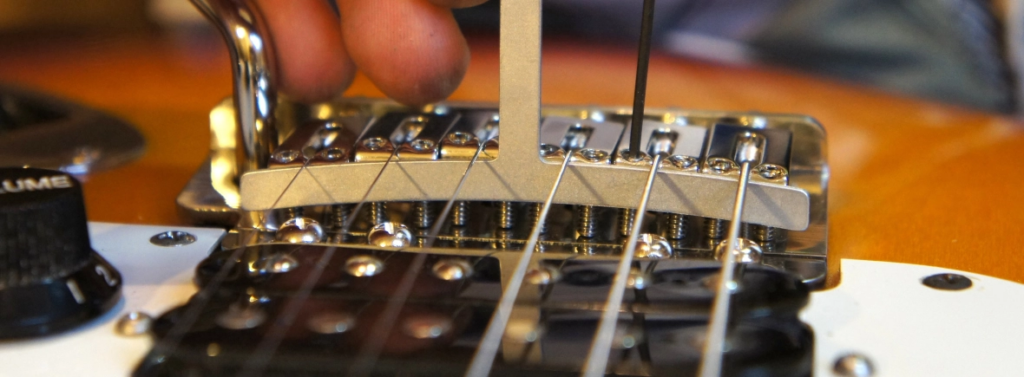
What Does a Guitar Setup Check and Adjust?
During a professional guitar setup, the following areas are typically checked and adjusted:
- Neck Relief/Truss Rod Adjustment – Ensuring the neck has the correct curvature to avoid fret buzz or string buzzing.
- String Action – Adjusting the height of the strings above the fretboard for comfort and playability.
- Intonation – Making sure the guitar is properly tuned across the entire fretboard, not just at the open string or the 12th fret.
- Pickup Height – Fine-tuning the distance of the pickups from the strings for optimal tone and output.
- Bridge Height and Saddles – Setting the height of the bridge and individual saddle heights to achieve proper string height and intonation.
- Nut Setup – Ensuring the nut slots are properly cut for string gauge and action, preventing string binding.
- Pickup Pole Adjustment – Setting the height of individual pole pieces for balanced output from each string.
- Polishing and Cleaning – Cleaning the fretboard, body, and hardware, removing dirt, oil, and corrosion to improve playability and appearance.
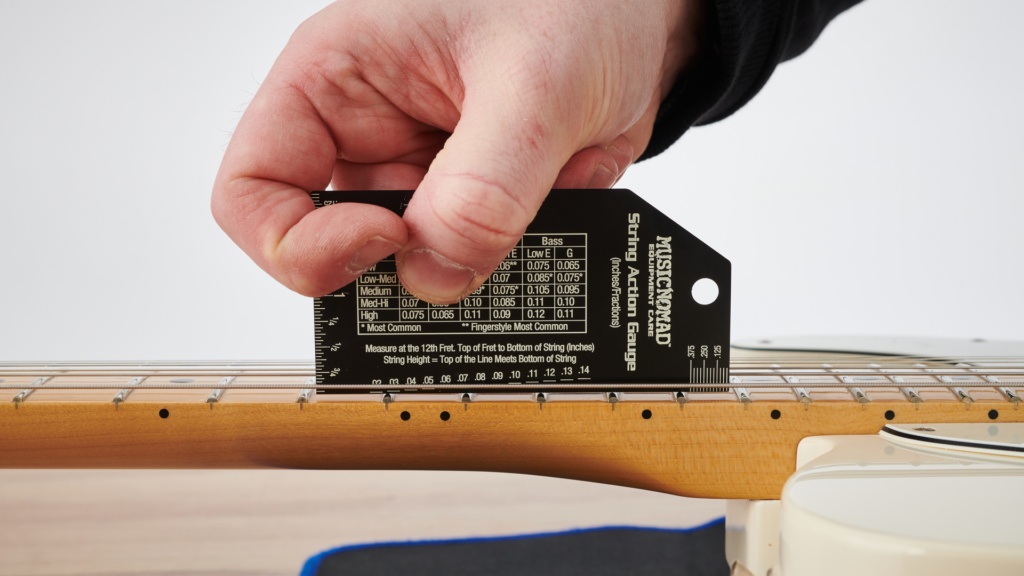
Each of these adjustments plays a vital role in how your guitar feels and sounds.
What Does a Setup Clean, Oil, and Polish?

While a setup primarily involves adjustments, it also includes essential cleaning, oiling, and polishing that not only enhance the instrument’s appearance but also improve its playability.
- Fretboard Cleaning and Conditioning – Over time, fretboards accumulate dirt, grime, and oils from your fingers, which can affect smoothness and tone. A professional setup includes cleaning and conditioning the fretboard, usually with lemon oil or specialized fretboard oils, to keep it hydrated and prevent cracking.
- Polishing the Body and Neck – Polishing the guitar’s body and neck with a suitable cleaner or polish improves the overall aesthetics and smooths out any rough spots, especially if your guitar has a gloss finish.
- Hardware Polishing – The pickups, tuners, bridge, and other hardware are also cleaned during a setup to remove any corrosion, ensuring smooth operation and longevity.
Why Should You Get a Setup Done, Even on a New Guitar?
Many guitarists might assume that a new guitar doesn’t need a setup, but that’s actually a common misconception. Even if you’ve just purchased a high-end guitar, a setup is still essential. Here’s why:

- Factory Setups are Generalized – While some manufacturers do set up their guitars at the factory, these setups are often done to meet basic standards. Your personal preferences such as string action or neck relief will likely be different from the factory’s baseline settings.
- New Guitars Settle – When you buy a new guitar, the wood and materials may still be settling and adjusting. The truss rod, neck, and strings will all undergo slight shifts after some play. Having a setup done after the first few weeks or months helps refine the instrument’s playability as the guitar settles.
- Even Expensive Guitars Need Fine-Tuning – Just because a guitar is expensive doesn’t mean it’s perfect out of the box. High-end guitars like PRS, Gibson, or Fender can still benefit from a personalized setup to maximize their potential.
Key Parameters for a Great Guitar Setup
A great setup is about adjusting the specific parameters of the guitar that affect its playability and tone. Let’s explore some of the key parameters involved in a comprehensive setup:
1. Intonation

Intonation is crucial for a properly tuned guitar. Even if your guitar is in tune at the open strings, it may be out of tune at other frets, especially around the 12th fret. Poor intonation leads to sour or out-of-tune notes higher up the neck. A setup ensures the bridge saddles are adjusted to allow the strings to vibrate at the correct length for precise tuning across all frets.
- How It’s Done: The saddles of the bridge are adjusted forward or backward to correct the pitch at the 12th fret, ensuring the guitar stays in tune no matter where you play on the fretboard.
2. Pickup Height

Pickup height is vital for achieving the right balance between tone and output from your guitar. Too high, and the pickups can become overly sensitive, causing muddiness or distortion. Too low, and your guitar might lack punch or clarity.
- How It’s Done: Adjust the height of the pickups (usually with screws) to ensure they are correctly balanced, maintaining a consistent volume across all strings. This affects the tone and output level.
3. Neck Relief and Truss Rod Adjustment

Neck relief refers to the slight curvature (or bow) of the guitar neck, which prevents string buzzing and ensures proper string action. A truss rod adjustment is often required to achieve the correct amount of neck relief.
- How It’s Done: The truss rod is adjusted (usually with an allen wrench) to either add or reduce relief in the neck. A slight bow is ideal for most players to prevent buzzing and allow comfortable string action.
4. Bridge Height and Saddles

The height of the bridge and individual saddles plays a major role in string action and overall feel. Low action makes playing easier, while higher action can be necessary for certain playing styles (e.g., slide or heavy strumming).
- How It’s Done: The bridge height is adjusted by raising or lowering the saddle screws. Additionally, each individual saddle may need slight adjustments for intonation and action.
5. Nut Setup
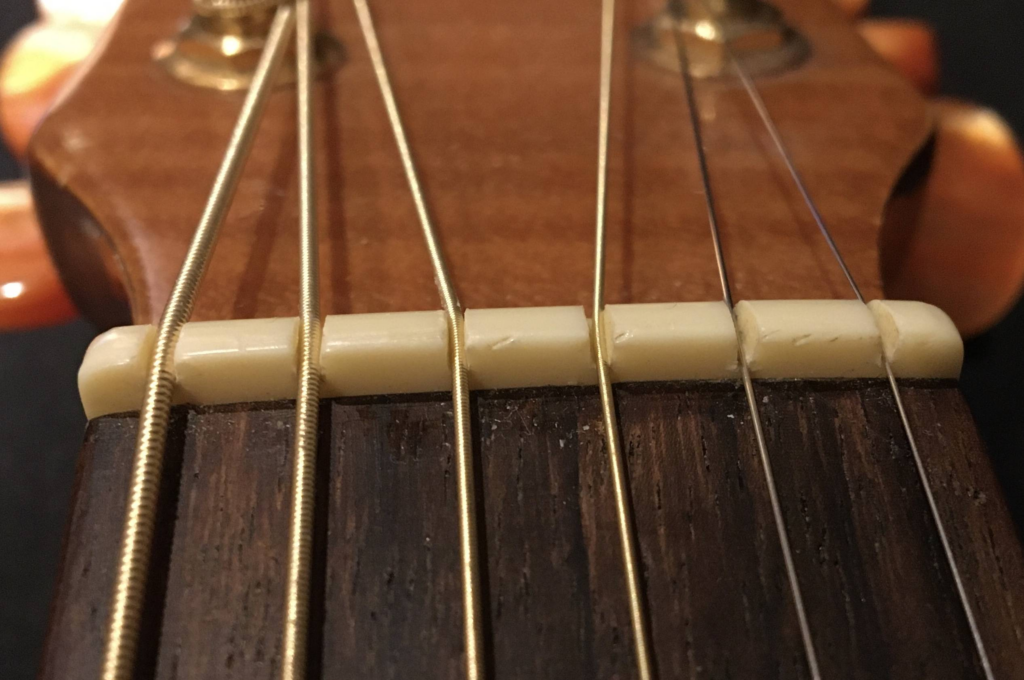
The nut is where the strings rest at the headstock end of the guitar. If the slots in the nut aren’t cut properly, strings can bind, causing tuning issues or a stiff feel. Proper nut setup ensures smooth tuning and a comfortable feel.
- How It’s Done: The nut slots are checked for proper depth and width to ensure the strings rest comfortably without binding or buzzing.
6. Pickup Pole Adjustment

The pickup pole pieces (the adjustable screws on each pickup) should be set at the correct height to balance the output of each string. Adjusting the pole pieces affects the magnetic pull on each string, influencing tone and volume balance.
- How It’s Done: The height of individual pole pieces is adjusted using a screwdriver to ensure even output across all strings.
Are Guitar Setups Different for Styles of Music or Personal Preference?
Yes, guitar setups can be tailored to specific musical styles or personal preferences. For example:
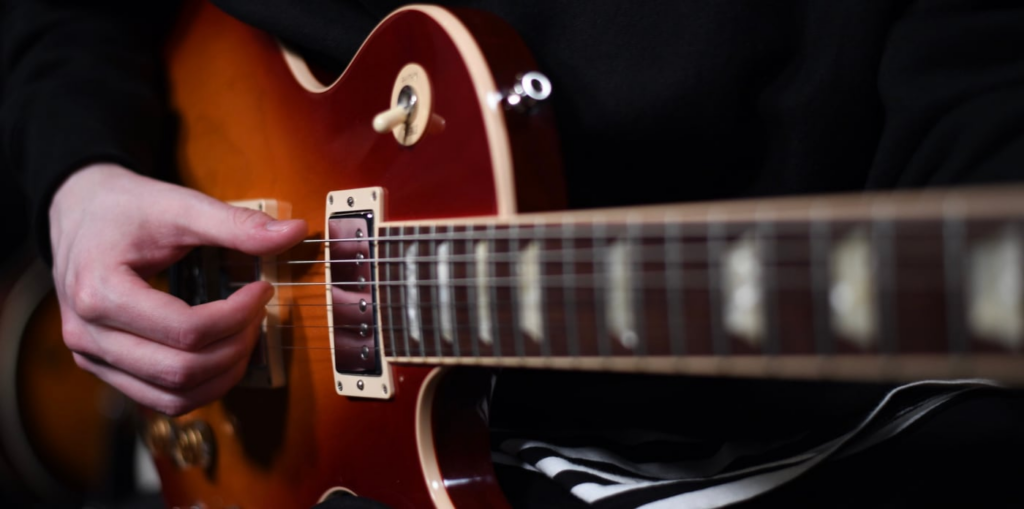
- Low Action for Faster Playing: Shredders or players who perform fast solos often prefer low action for easier fretting and faster playability.
- Higher Action for More Control: Jazz and blues players may prefer higher action for better tonal control and to avoid string buzz when bending or playing with dynamic range.
- Setup for Slide Guitar: Slide players often prefer higher action to prevent the slide from buzzing against the frets.
In addition to musical styles, personal preference plays a significant role in determining ideal setup parameters. Some players prefer low, buttery action, while others enjoy a little more resistance from their strings for greater control and precision.
Conclusion: Why Your Guitar Needs a Setup

A guitar setup is one of the best investments you can make to ensure your instrument plays and sounds its best. Whether you’re a beginner or an experienced player, getting your guitar set up is essential to maximizing its performance, comfort, and tone.
Even a new guitar can benefit from personalized adjustments, and expensive guitars are no exception. By understanding the key parameters—intonation, pickup height, neck relief, bridge height, and more—you can make sure your guitar suits your playing style and personal preferences perfectly.
So, don’t wait—book a guitar setup today and enjoy a better playing experience tomorrow!
Thanks for reading DreamingGuitar.com’s complete guitar setup guide! For more tips, reviews, and expert insights on all things guitar, stay tuned to our blog.
The Author.

Brendon McAliece is a multi lingual expatriate Australian living in Thailand who speaks Thai, a number of its dialects and Lao. He has been playing guitar since he was 12 and continues to do so to this day.
He has performing in bands across the Middle East while contracting as a Aircraft Weapons Instructor with his 10 years of RAAF Armament Fitter experience and his maintained his love for playing guitar it continues to thrive today.
Also Visit:
DreamingGuitar.com – DreamingCoffee.com – LetsFlyVFR.com
Explore More from the Dreaming Network
As an Amazon affiliate I may earn on qualifying sales.
